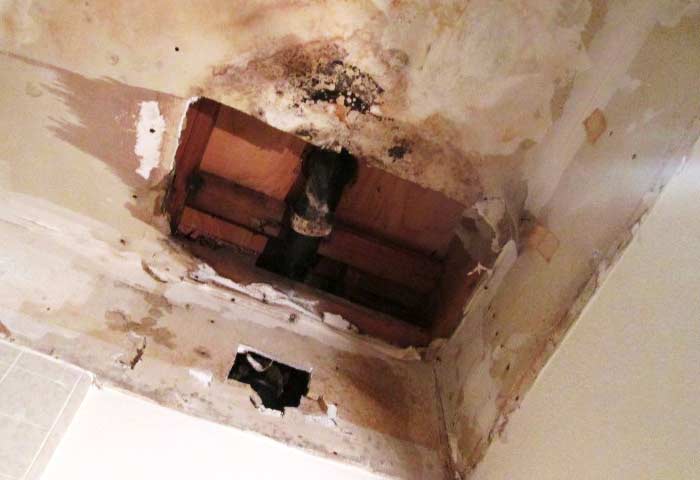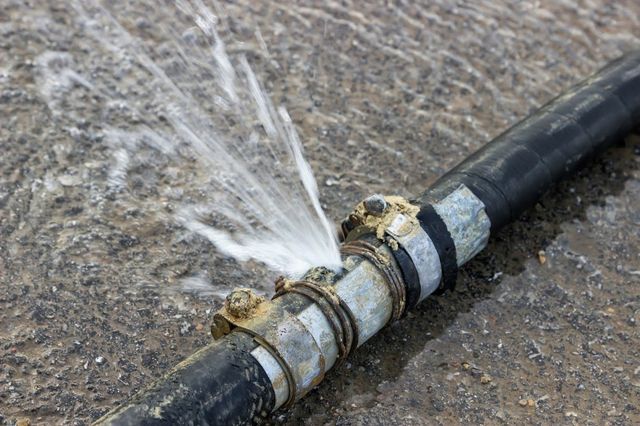Spotting and Swiftly Fixing a Leaking Pipe: Step-by-Step
Spotting and Swiftly Fixing a Leaking Pipe: Step-by-Step
Blog Article
We've noticed the article relating to How to Install and Connect a New Dishwasher down the page on the net and think it made good sense to share it with you over here.

A burst pipeline is a major emergency; you can just stand as you view water you pay a lot to reunite with the planet. In worse instances, you discover a swimming pool on your kitchen floor, which is a wonderful trip danger, especially if you have kids around. If the pipeline that burst remained in your walls, problem: you may require to repaint that entire area.
Just how can a disaster like a ruptured pipe be stopped and managed? Well, by listening to your expert emergency plumbings and also complying with these rules.
Just how do I know when my pipelines have ruptured?
Varying water stress
Pipelines do not simply burst in a day. You may have noticed that your kitchen area faucet or shower doesn't run immediately when you transform the faucet. It may stop for a couple of secs and then blast you with even more pressure than typical.
In other circumstances, the water might seem regular at first, after that decrease in pressure after a few seconds.
Damp wall surfaces and water spots
Prior to a pipeline ruptureds, it will leakage, the majority of times. If this consistent dripping goes undetected, the leakage might finish into a large wound in your pipe. One easy method to avoid this emergency is to watch out for damp wall surfaces advertisement water stains. These water stains will lead you right to the leak.
Puddles under pipes and sinks
When a pipe bursts, the outflow forms a puddle. It may appear that the pool is growing in dimension, and also no matter the number of times you wipe the pool, in a few minutes, there's one more one waiting to be cleansed. Frequently, you might not have the ability to map the pool to any kind of noticeable pipelines. This is an indicator to call a professional plumber.
Untraceable dripping noises
Pipeline ruptureds can take place in one of the most undesirable locations, like within concrete, inside walls, or under sinks. When the house goes silent, you may be able to listen to an aggravatingly relentless trickling sound. Even after you've checked your shower head as well as kitchen area faucet, the leaking may continue.
Dear reader, the dripping may be originating from a pipeline inside your wall surfaces. There isn't much you can do concerning that, other than inform a specialist plumber.
Turn off the Water
When water freezes, it broadens in quantity by regarding 9 percent. And it expands with tremendous pressure: The stress inside pipes may go from 40 pounds per square inch to 40,000 psi! No pipeline can hold that much pressure, so it breaks open. The break may occur where the ice forms, yet regularly, it takes place where water pressure finds a weak point in the pipe. That may be inches or even feet from the icy location. Discover the water shutoff valve and turn off the water to stop even more damages. You may additionally require to turn off the electrical energy as well, depending on where the leakages happens and just how large it is.
Contaminated water
Many individuals presume a burst pipeline is a one-way outlet. Fairly the contrary. As water drains of the hole or laceration in your plumbing system, contaminants locate their method.
Your water may be contaminated from the resource, so if you can, check if your water container has any kind of troubles. Nonetheless, if your drinking water is provided as well as detoxified by the local government, you ought to call your plumber immediately if you see or scent anything amusing in your water.
What do I do when I detect a ruptured pipe?
Your water meter will continue to run even while your water wastes. To reduce your losses, find the main controls as well as transform the supply off. The water mains are an above-ground framework beside your residential or commercial property.
How to Fix & Detect a Leaking Pipe
How Do I Know if a Pipe is Leaking?
Leak detection tests can help you determine if your pipe has a leak. Even if you don’t see an apparent leak, you should still conduct leak detection tests regularly to save water and money—and prevent major damage to your home.
Water meter. It can be helpful to figure out what your usual water meter usage numbers are and then monitor them regularly. To monitor your meter, first, turn off all water faucets in your home. Check the meter and write down the numbers. In a few hours, check the meter again. If the numbers have changed, you have a leak. Water gauge. Use a water gauge to test your water pressure. Your showerhead should produce a certain amount of water pressure based on its model and design. If the pressure is lower than it is supposed to be for that specific showerhead, your home likely has a leak. Puddles. Look inside your bathroom, laundry, and kitchen sink cabinets. Puddles around the cabinets or around toilets, tubs, showers, and washing machines indicate the presence of a leaking pipe. You may also notice loose tiles, peeling or flaking paint, or mold caused by water accumulation. Napkin test. Even if you don’t see any puddles, you may still have a leak. You can test for water leaks in the bathroom, laundry, and kitchen by wiping below-sink connections with a napkin, paper towel, or piece of toilet paper. If it becomes damp, you probably have a leaking pipe under the sink. Discolored walls. Walls that are discolored—usually with brown or yellow stains—or bulging might mean that they have been impacted by water damage caused by a leaking pipe. Smell. A leaky pipe will create sitting water, and over time, that water may develop a musty smell. If your home smells musty, but you can’t locate the source, it may be due to a leak. Steps for Fixing a Leaking Pipe
A leaky drain can be remedied by tightening the pipe base, replacing the drain seal, caulking the rim, and tightening the pipe nut. Similarly, a leaking toilet pipe can be treated by tightening the packing nut. You may also need to replace the valve. A leaky faucet may just need tightening or replacement of the washers. If that doesn’t work, consider replacing your faucet. If your pipe has a hole in it, you may want to use a pipe leak sealer or pipe leak tape. This quick fix for water pipe leaks can also temporarily fix a copper pipe leak. https://www.ahs.com/home-matters/quick-tips/how-to-tell-if-pipes-are-leaking/

Do you like reading up on What to Know Before Installing a Dishwasher? Give a comment directly below. We would be delighted to hear your ideas about this blog post. We are looking forward to see you back again later on. For those who enjoyed reading our article plz remember to pass it around. Thank you so much for going through it.
Navigate plumbing issues professionally. Report this page